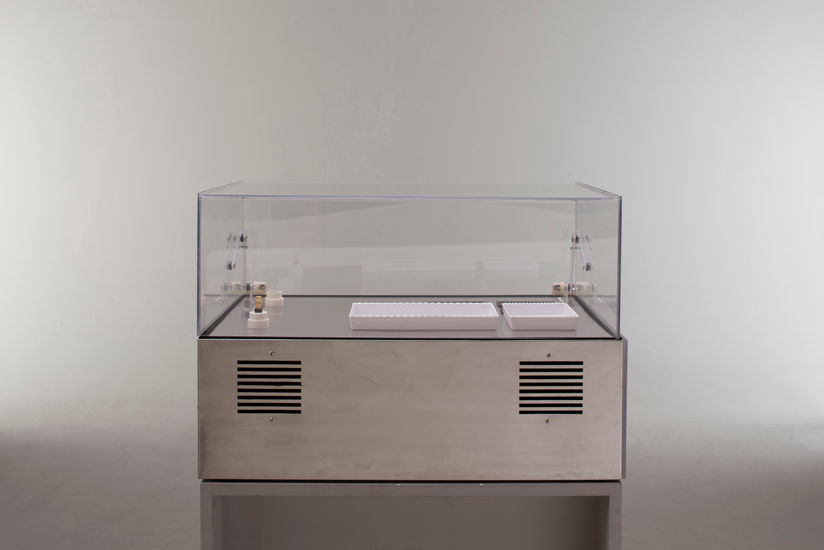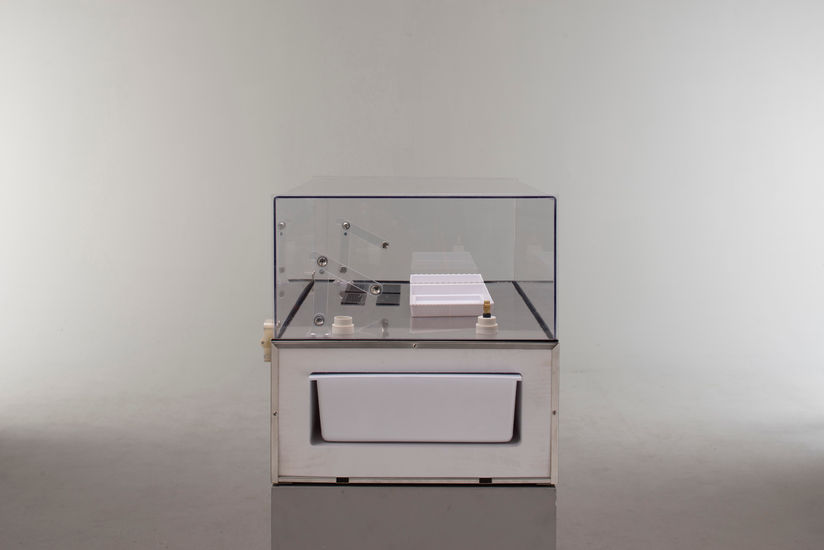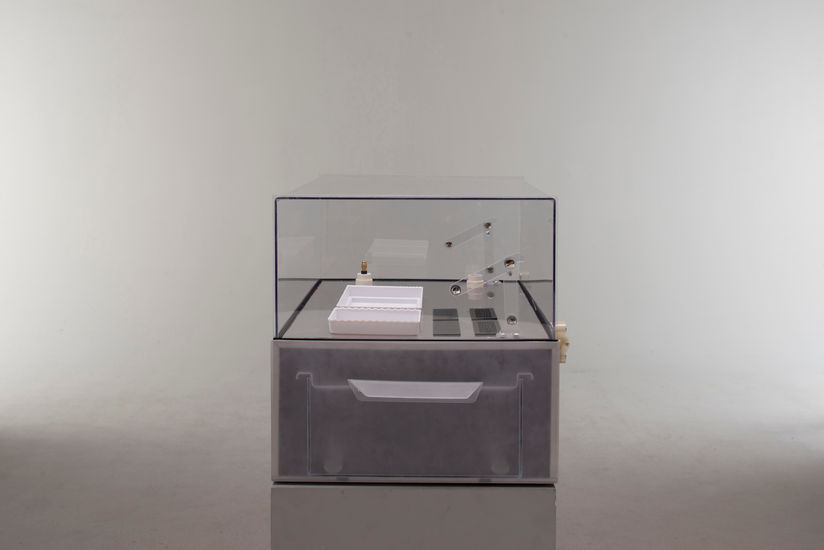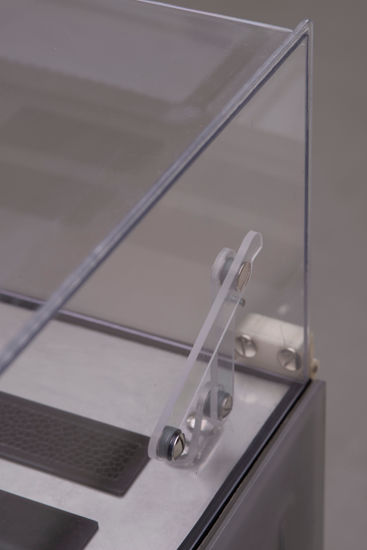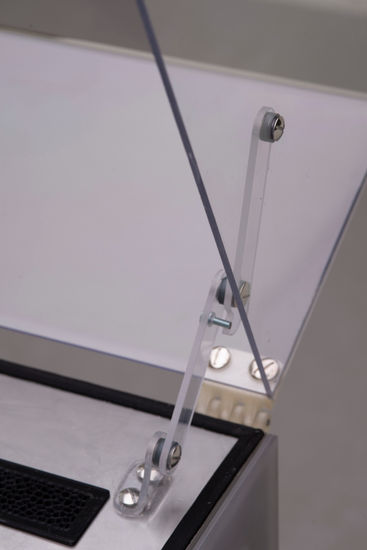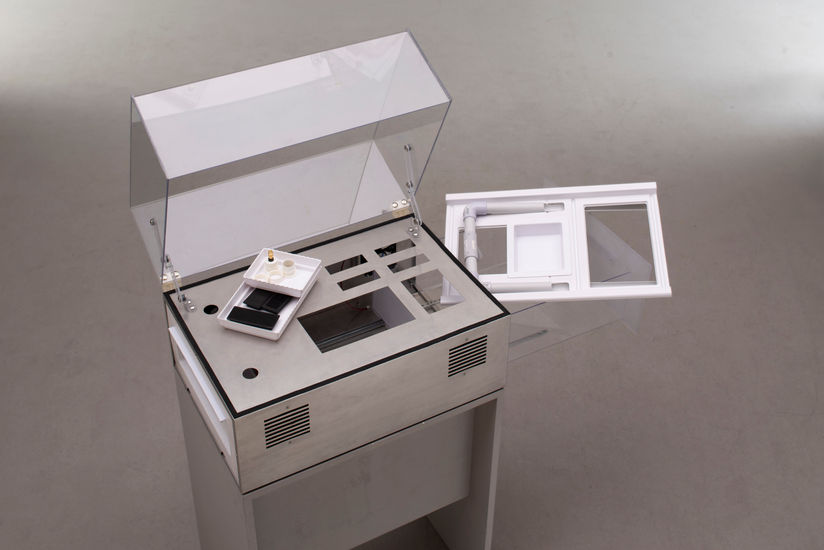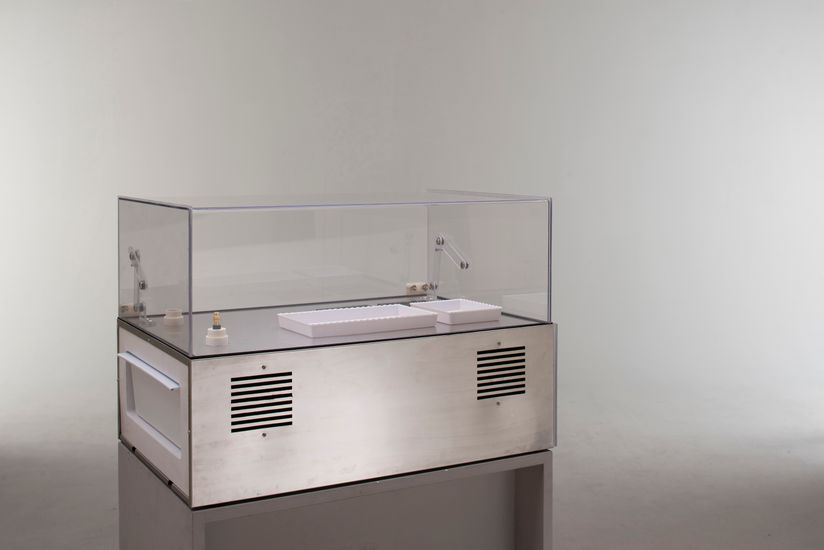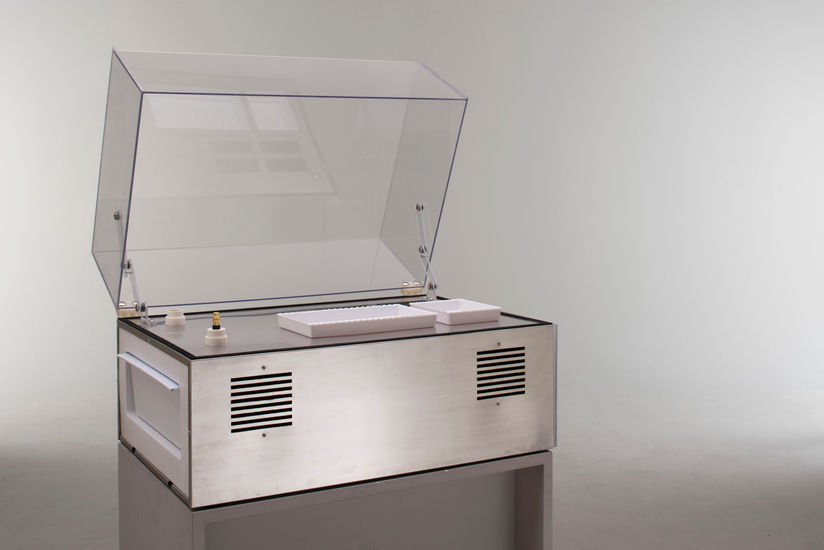Material and Production
EN | The base of CircuLarv is constructed from 0.5 mm thick sheet metal, which has been bent to enhance its stability. The drawer and cover are made of polycarbonate, shaped using heat to achieve the desired form. The top modules and the harvesting module are made from thermoformed polystyrene, ensuring both functionality and lightweight properties.
DE | Die Basis von CircuLarv besteht aus 0,5 mm dickem Blech, das zur Erhöhung der Stabilität gebogen wurde. Der Schubladeneinsatz und der Deckel bestehen aus Polycarbonat und wurden mithilfe von Hitze in Form gebracht. Die oberen Module sowie das Erntemodul sind aus thermoverformtem Polystyrol gefertigt, was Funktionalität und ein geringes Gewicht gewährleistet.
IT | La base di CircuLarv è realizzata in lamiera di metallo spessa 0,5 mm, piegata per garantire maggiore stabilità. Il cassetto e il coperchio sono realizzati in policarbonato, modellato utilizzando il calore. I moduli superiori e il modulo di raccolta sono realizzati in polistirolo termoformato, per assicurare funzionalità e leggerezza.


